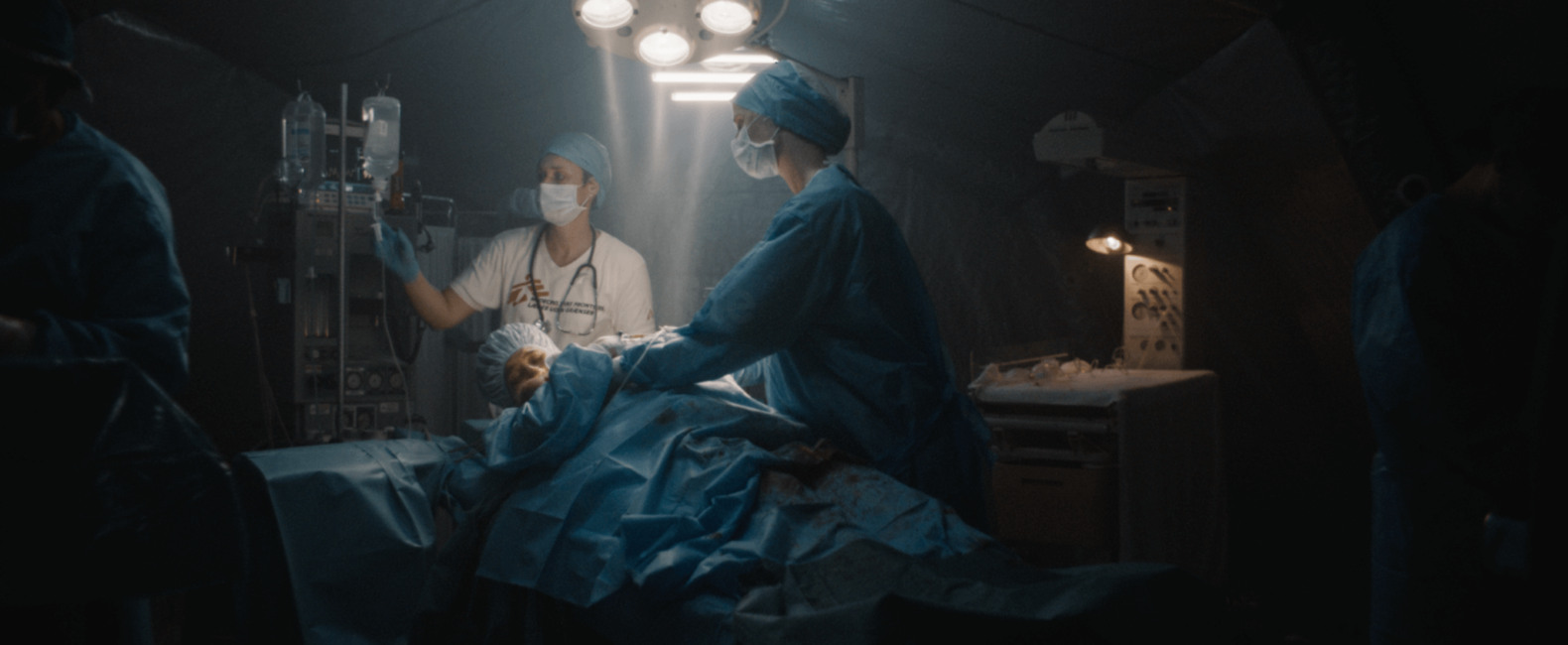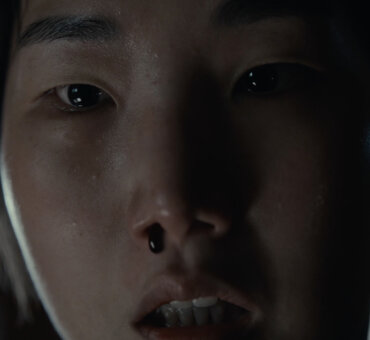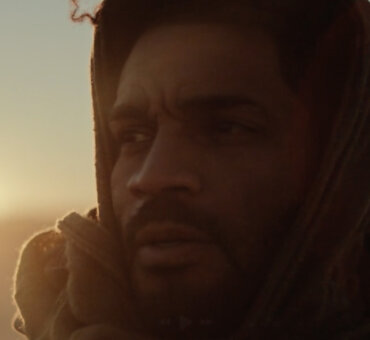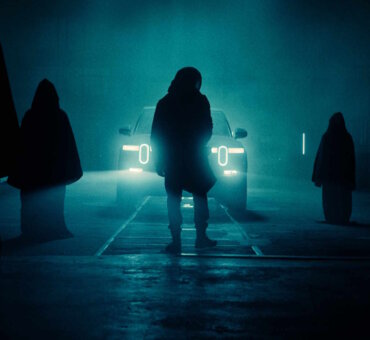Several times during our conversation, Director Rune Milton Olsen literally jumped out of his chair and started pacing around the room when talking about the production of Life. DP Paul Meyers, ASC would laugh, as if this was nothing new, mirroring his enthusiasm. They’re the two minds behind the short film, made for Doctors Without Borders, and to say it was a passion project is quite the understatement.
But, these two filmmakers are connected for different reasons. For Rune, as a father, he wanted to bring a universal perspective to birth and life. For Paul, he was bringing personal trauma to the situation; it was something “sacred” he needed to do. Either way, Life was more than a commercial project.
“Birth is universal and life is universal—for rich people, poor people, whoever,” Rune said. “I wanted everyone to be able to feel and experience this story, to tell it backward, to understand the context at the end instead of establishing the scene around this beautiful, horrible context.”
The latest Filmsupply Films release, Life is a tense, beautiful, and emotional film driven by imagination and technical wizardry. The concept is ambitious. The project is ambitious. And now, all the footage is available to license on Filmsupply.
We had the chance to sit down with Rune and Paul to talk about why they felt they had to make the film this way. In our conversation, we talk about the importance of perspective, the event that inspired Paul’s involvement, and what it’s like to operate a puppet baby underwater.
Filmsupply: Was the original idea for Life as ambitious as the final product?
Rune Milton Olsen: I was talking to Doctors Without Borders about this project. They had an idea, but then I just started playing some music and thinking. I said, “I see light. I want to make a film where you’re the baby being born. I want the audience to see and feel what the baby feels.”
They were like, “Whoa.” I had no idea how to do it, of course [laughs]. We had conversations about how it needed to be written. What is the story? What happens? Then, I realized that Paul had just been through this, so I called him and said, “I have a project. I’m not even sure I want to tell you about it, because I don’t know how it’s going to turn out. But I also feel I should at least just tell you about it. I know what you’ve been through.”
Paul Meyers: To back up a little bit, my wife was due with our third baby just before this. She was due in October, actually, but had what’s called a concealed placental abruption a little over two months earlier. It’s very rare and was out of the blue. Essentially, the placenta disconnects, and all this internal hemorrhaging starts happening within the mother, and it’s all just feeding into the womb. Her stomach was getting super bloated. I was away on a job, and it was just really scary because they took her to the hospital.
My son was born with no heartbeat whatsoever. He had been gone for a little while and we almost lost my wife, and it was just this really traumatic experience. He was in the NICU for like six weeks. He had had all this bleeding in his brain, along with some other complications. We made it through that one step at a time and he’s doing fantastic, actually. That’s the miracle of all of it. He’s doing wonderfully.
So, while all of this was happening, Rune was talking with the agency. I didn’t know about any of this, and like Rune always does, he came to them and said, “What if we do something totally different? Throw that idea out the window, let’s make something beautiful.” Like he always does, he came up with this great idea, and then he came to me.
And the client was on board with the idea?
Rune: They were totally on board from the first minute when I came up with these ideas. They’re actually very creative, too, and this idea didn’t come out of nowhere. They had some great ideas as well, but they liked this instantly and it really didn’t take long to nail down the story. Then it was about figuring out how we do it.
I remember we were doing post-production on another project, editing or whatever and I told the team, “Hey guys, I have this project we’re going to do. There’s no money and it’s a little bit ambitious.” I called my producer and told him that we needed to create a baby, a birth from inside. We need to have a baby.
Paul: An animatronic baby [laughs].
Rune: Right, an animatronic baby. We had all these crazy ideas and special effects and I’d already arranged it with the client. I’ve promised everyone that we’re doing it, so now we need to figure out how to do it. Obviously, I was thinking about it from the filmmaker’s point of view. It’s always fun to be a little bit of an engineer. But of course, the most important thing was to treat it with the utmost respect.
This is life. I have two kids, Paul has three. We experienced this. We’ve had long conversations with the midwife that helped during our daughters’ birth. Obviously, Paul had the experience with his son. We wanted to make sure that we were making something that was accurate, and also true and with respect. I hope we succeeded in it. I haven’t heard any negative response from people who have been in a similar situation. People have been very moved.
Why write this story from the baby’s perspective?
We wanted to make it about the miracle of life and how fragile it is. It’s so complicated. So, to answer your question, it’s to get into the experience, to make it a visceral experience. We wanted to make it much more emotional and to feel, rather than understand. It was really important to make it universal.
We had another idea at the beginning, where there’d be this amazing shot of a woman giving birth in a hospital. But, every time the camera would turn, people would just disappear. For me, from a technical point of view, it was a great idea. But, it doesn’t make it universal. Birth is universal and life is universal—for rich people, poor people, whoever. I wanted everyone to be able to feel and experience this story, to tell it backward, to understand the context at the end instead of establishing the scene around this beautiful, horrible context.
Paul, was it difficult for you to take on this project, having been through that traumatic experience with your son?
I remember I was sitting in the NICU of the hospital. During that NICU time, basically the only thing the doctor said we could do for our baby was to hold him. So we literally had me, my wife, and my mother in law on rotation, just holding the baby for eight hours straight.
I had just come out of that, and I remember Rune called me and told me about it, and then he said, “I’m just going to send you the treatment and we can talk about it another time.” He sent me this treatment and it was only a couple of pages. But he also sent me a link to a track, which is actually the track in the film. I turned the track on and I started reading through the script and it was a really emotional experience for me. It really touched me and I felt like there was something sacred about what we were doing, about the concept. I just had to do it. It was going to be hard, but I had to be a part of a project like that because it was just something that I had felt so deeply in my own life.
How did you begin to build on the concept?
Rune: We couldn’t have done it without the entire team. We wanted to shoot as practical as possible, and I always warned them, no matter what, I was trying to stay true to that. We got an amazing puppeteer named Rob Carlisle in South Africa. He’s a genius. He came with two babies, one that was more realistic, but not animatronic. Then they came with the second baby that was animatronic. We shot with both of them, depending on what we needed.
Without Rob, we wouldn’t have had a chance. We owe so much. He gave us a world to shoot in. We had the guys in Hamburg. Then we had both production companies that were just supporting us totally. We had the guys in Greece and all this support. We had the effects team in Hamburg, who helped out with all the macro stuff with the studio, with the water tank. Everyone worked for free, some people even invested their own money.
Paul: That’s what was so special about it. We do so much commercial work, and there’s a certain level of engagement and enthusiasm from people that you feel in those projects. This was a totally different level. Every person who was a part of it only was a part of it because they had read the script and they were inspired by it. It was an amazing environment to work in.
Was the shoot as off-the-wall as the concept?
Paul: The project didn’t really start until Rob Carlisle was brought in, who built those babies and designed them and created them. The same with the placenta. Once he was on board, then it was like Okay, now we can see a way forward where we have a world, we have a way to shoot this. Then it was just all the fun stuff—how do we actually make this look real and how do we make it believable?
This was a fun project in a lot of ways, especially because I had done a bunch of little things throughout my career—tabletop work, food photography, or super macro, high-speed fashion footage, or car work. So, I knew what the tools were and some of the things we could do with high speed photography. But, instead of something meaningless, it was like now we get to actually put these tools to use in a storytelling way. We have this world of a placenta and a baby that we can start to fill out a little bit. Then it was all about suspending disbelief.
It was so fun. Especially for the underwater shots, there were at least 10 people crowded around this big underwater tank. Someone’s moving the water around and I’m behind the camera, they’re puppeteering the doll, and we’ve got multiple lights that are moving.Rune: We knew exactly what we were looking for. But, when you have 10 people, everything just needs to hit exactly, where the baby looks real, and the light is right, and everything just works. Every time we did a shot, it would just be like [mimics explosion]—I would just grab the camera, and it’s mounted on a huge rig, and the water was freezing. Paul would run around and do the lights, then we’d switch, or I’d puppeteer. Everyone was doing everything to help us, but we were the only one that really, really fully understood exactly what bits we were doing.
Paul: That’s been a theme throughout our work together. It really served us for this one. I just love the hand-operated aspects of the project. There’s some energy that comes into the work that you just don’t get otherwise.Rune: Of course, it’s pretty difficult to operate a big, tiny baby puppeteer hand [laughs]. Just making the hand open was difficult, while Paul is shooting upside down and has to operate the camera in perfect sync while I’m standing on someone’s shoulder with my body halfway in the water. The hand has a string for each finger, too.
Paul: And it’s the size of a baby hand!
Rune: It was crazy. But, then you look at the screen and you see the hand. And you’re like okay, we finally got the shot that took us 45 minutes of real physical pain to get everything in the right order.
Paul: That’s what I love. Those were my favorite moments. On-set, when you’re in the middle of that, you’re thinking, we are crazy. But, you also look around and think, I love what we do.Rune and Paul both know the impact a brand can have when they’re willing to take risks. Read how director Rayka Zehtabchi is also pushing brands to be bold in their content.






